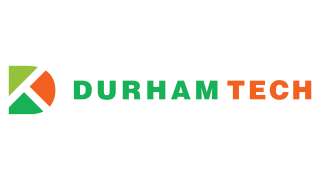Quality Risk Management is utilized by companies to determine where the risks lie that may adversely impact the quality of their product and the business operations within the organization. Knowing the regulatory aspects that companies are expected to maintain to produce quality results and how to apply the regulations to various tools for risk assessment is a key component to successful identification and mitigation of the risks within organizations.
In this course, participants will be introduced to the regulatory requirements for assessing risk within various aspects of daily operations, including but not limited to equipment, systems, and processes, both manual and electronic. They will also be given several commonly used tools to adequately assess the risks within their organization. Using these tools, participants will work on internal examples within their company to practice risk assessment and mitigation strategies that will minimize the risks for their example so they can be applied to daily activities that ultimately will benefit their organization.
- Team Leaders and Supervisors
- Quality Control Personnel
- Quality Assurance Personnel
- Maintenance / Engineers
- Benefits to the organization
- Define Risk Terminology
- Regulatory Expectations
- Working with risk matrices
- Principles of QRM (ISO 31,000)
- QRM Framework (ISO 31,000)
- QRM process (ICH Q9)
- Risk management methodology
- Integration of QRM into existing QMS
- Industry Applications (with practical exercise)
- Gain an understanding into how risk management benefits the organization
- Introduce terminology associated with risk management
- Discuss the regulatory basis for a risk management program
- Review other regulatory/industry initiatives
- Discuss principles, framework, and process of Quality Risk Management (QRM)
- Present various QRM tools and matrices
- Discuss the integration of QRM into the company’s Quality Management System (QMS)
- Perform a sample risk management exercise using tools discussed
Delivered in-person in a classroom or lab setting.
A combination of online and in-person components.
Delivered online with a live instructor at a scheduled date and time.
Quality Risk Management is utilized by companies to determine where the risks lie that may adversely impact the quality of their product and the business operations within the organization. Knowing the regulatory aspects that companies are expected to maintain to produce quality results and how to apply the regulations to various tools for risk assessment is a key component to successful identification and mitigation of the risks within organizations.
In this course, participants will be introduced to the regulatory requirements for assessing risk within various aspects of daily operations, including but not limited to equipment, systems, and processes, both manual and electronic. They will also be given several commonly used tools to adequately assess the risks within their organization. Using these tools, participants will work on internal examples within their company to practice risk assessment and mitigation strategies that will minimize the risks for their example so they can be applied to daily activities that ultimately will benefit their organization.
- Team Leaders and Supervisors
- Quality Control Personnel
- Quality Assurance Personnel
- Maintenance / Engineers
- Benefits to the organization
- Define Risk Terminology
- Regulatory Expectations
- Working with risk matrices
- Principles of QRM (ISO 31,000)
- QRM Framework (ISO 31,000)
- QRM process (ICH Q9)
- Risk management methodology
- Integration of QRM into existing QMS
- Industry Applications (with practical exercise)
- Gain an understanding into how risk management benefits the organization
- Introduce terminology associated with risk management
- Discuss the regulatory basis for a risk management program
- Review other regulatory/industry initiatives
- Discuss principles, framework, and process of Quality Risk Management (QRM)
- Present various QRM tools and matrices
- Discuss the integration of QRM into the company’s Quality Management System (QMS)
- Perform a sample risk management exercise using tools discussed



